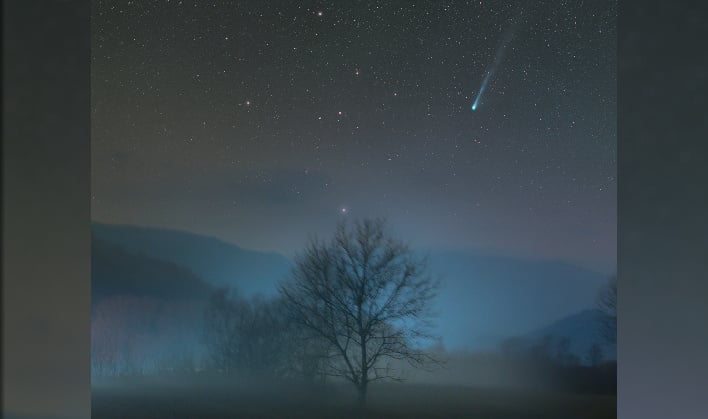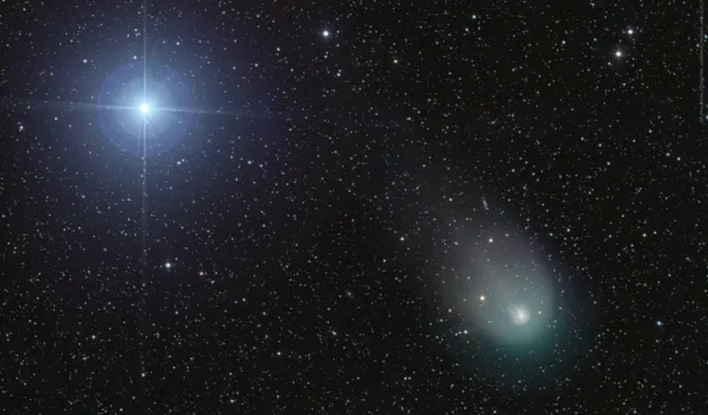Rare Devil Comet Will Peak This Weekend For Once In A Lifetime Viewing

While there is a chance that the periodic comet can be viewed with the naked eye, NASA suggests breaking out a pair of binoculars or a small telescope for best viewing. Comet 12P/Pons-Brooks, also known as “Mother of Dragons” comet, will reach its closest point to the sun, known as perihelion, on April 21. At that point, the comet will be approximately 144 million miles from the sun.

Over the coming weekend, 12P/Pons-Brooks should be significantly brighter, with a magnitude of around 5.9, making it easier to spot in the night sky. One thing to note for those in the more northern latitudes is that it will most likely be more difficult to spot as it will be positioned in the sunset's glow.
“In spite of the fact that the comet should be brightest because it is nearest to the sun, it is quite distant from us,” remarked Frank Maloney, an associate professor of astronomy and astrophysics at Villanova University in Pennsylvania. “Comets can exhibit major changes in brightness as the sun warms them, but unless something happens, the comet will be visible only in binoculars or a telescope.”
Comet 12P/Pons-Brooks is expected to make its closest approach to Earth in June. While comets are typically easier to spot at their closest point to Earth, this will not be an option for those in the Northern Hemisphere wanting to view the devil comet, as it will be only visible in the Southern Hemisphere.
For those wanting to catch a glimpse of the Mother of Dragons comet, it should be located just beneath the Moon, and just right of Jupiter. NASA instructs that onlookers will need to be quick, as it drops 10 degrees elevation an hour after sunset and then sets an hour later. The optimal viewing time should be just as twilight ends, with a clear view toward the horizon.

